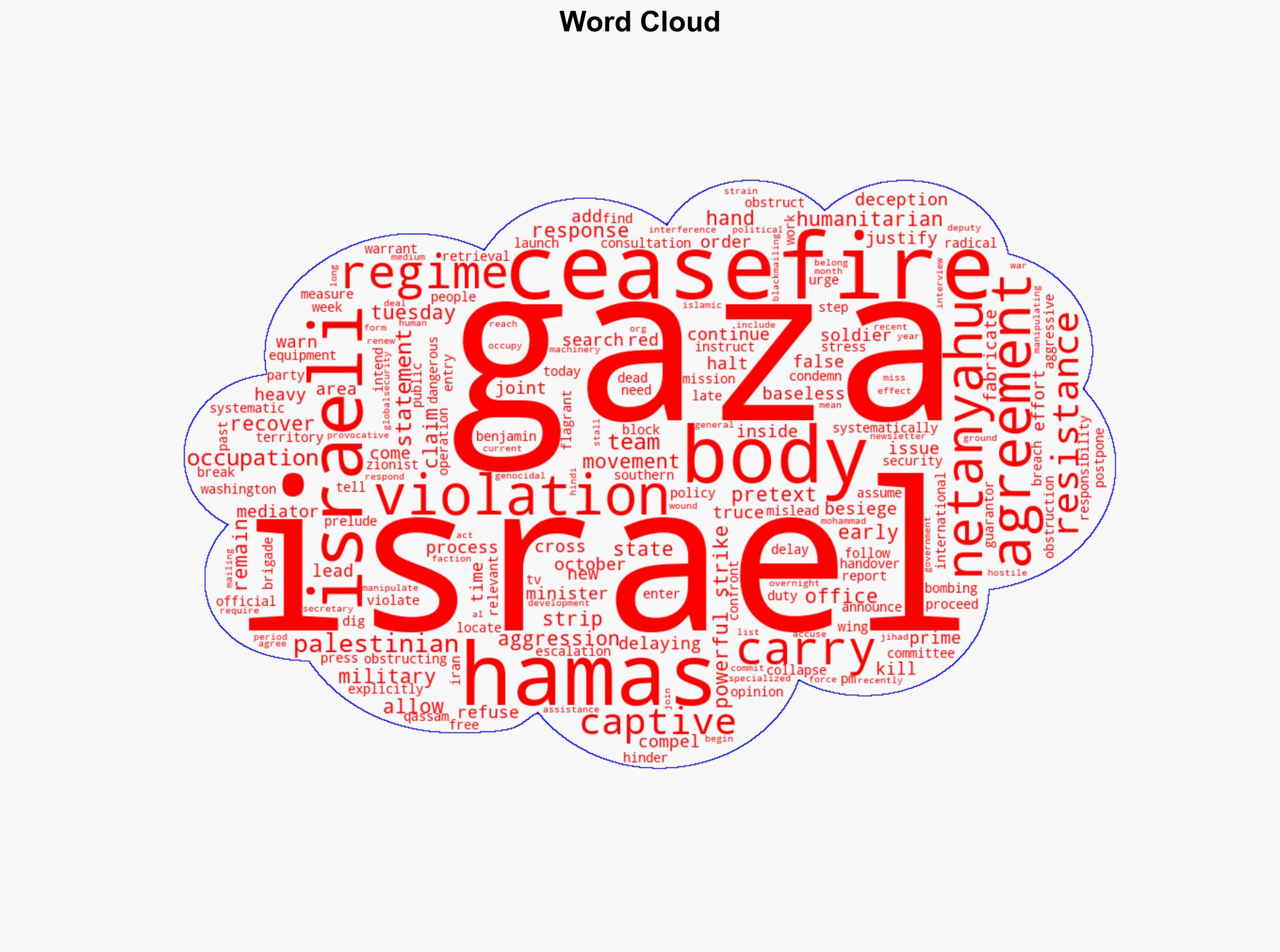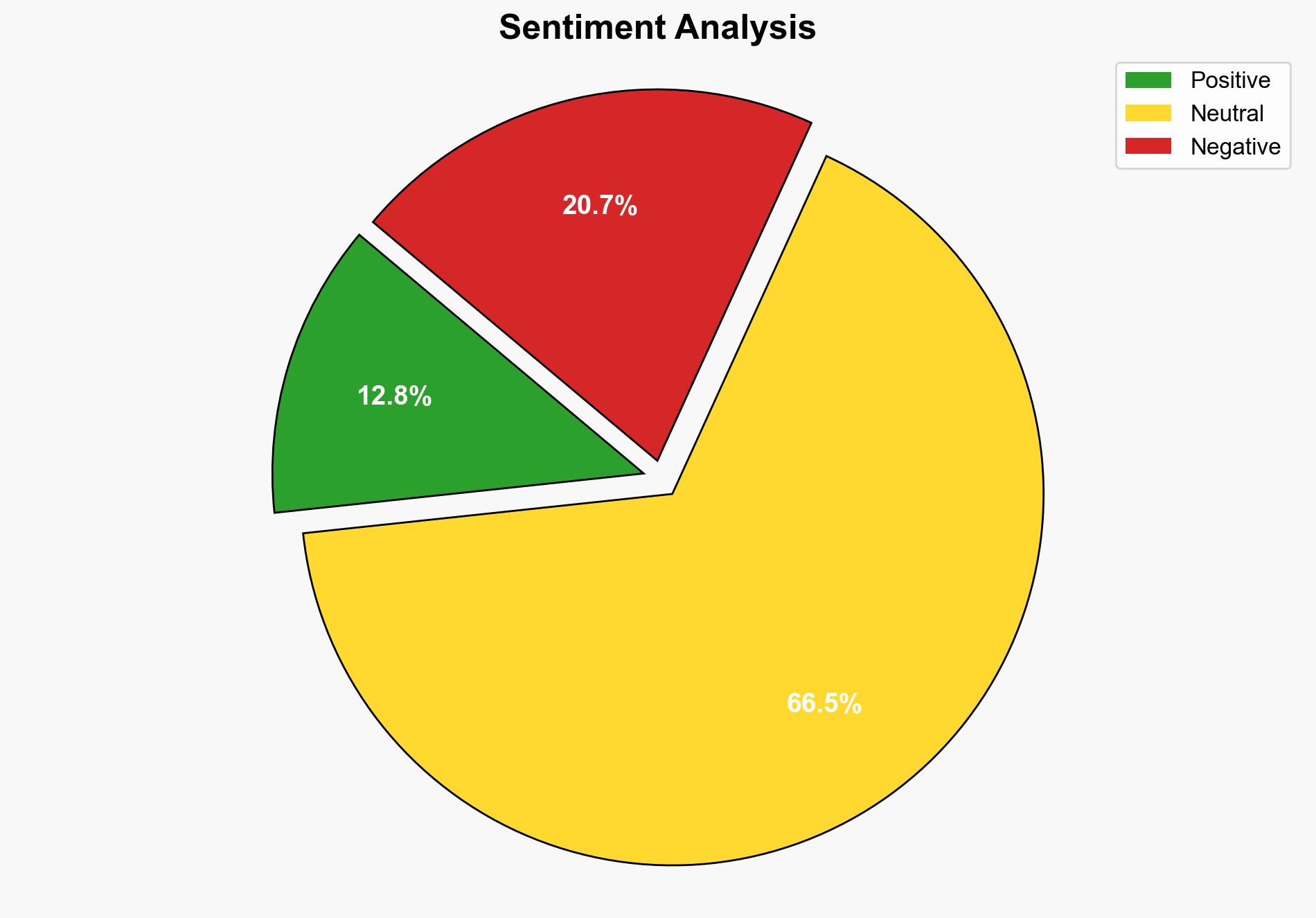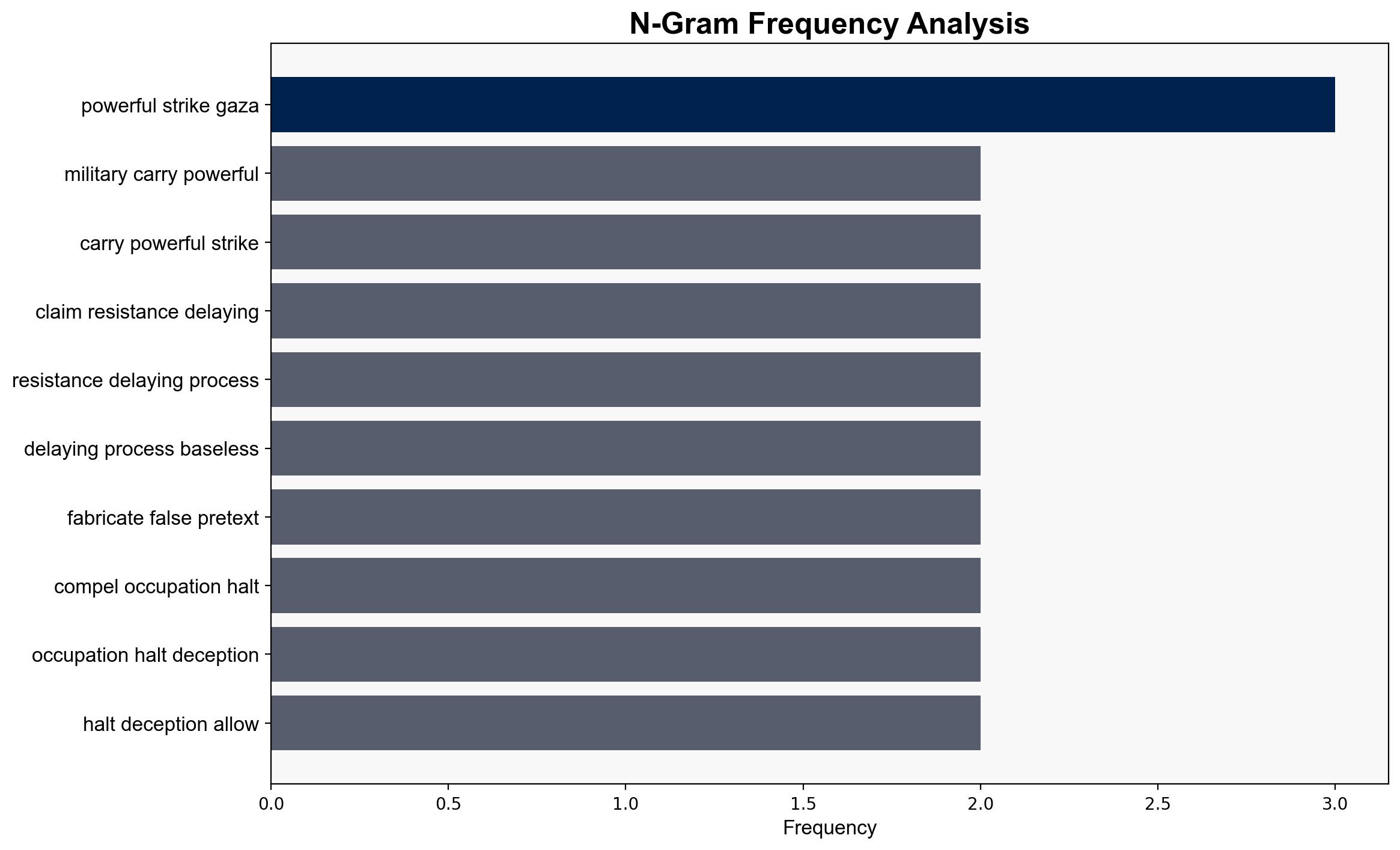Netanyahu orders ‘powerful strikes’ on Gaza after over 125 Israeli truce violations – Globalsecurity.org
Published on: 2025-10-29
Intelligence Report: Netanyahu orders ‘powerful strikes’ on Gaza after over 125 Israeli truce violations – Globalsecurity.org
1. BLUF (Bottom Line Up Front)
The most supported hypothesis is that Israel’s military actions are a strategic response to perceived violations by Hamas, aimed at maintaining security and political leverage. Confidence in this assessment is moderate due to conflicting narratives and lack of independent verification. Recommended action includes diplomatic engagement to de-escalate tensions and ensure humanitarian access.
2. Competing Hypotheses
1. **Hypothesis 1**: Israel’s strikes are a defensive measure in response to genuine ceasefire violations by Hamas, aimed at deterring future aggression and maintaining national security.
2. **Hypothesis 2**: Israel is using alleged ceasefire violations as a pretext to exert military pressure on Gaza, potentially to achieve broader strategic objectives unrelated to immediate security concerns.
3. Key Assumptions and Red Flags
– **Assumptions**: Hypothesis 1 assumes that reported violations by Hamas are accurate and pose a significant threat. Hypothesis 2 assumes Israel’s strategic goals extend beyond immediate security needs.
– **Red Flags**: The lack of independent verification of ceasefire violations and the potential for biased reporting from involved parties. The narrative of systematic obstruction by Israel suggests possible manipulation of facts.
4. Implications and Strategic Risks
– **Escalation Risks**: Continued military actions could lead to broader conflict, drawing in regional actors and destabilizing the area further.
– **Humanitarian Impact**: Disruption of humanitarian efforts could exacerbate the humanitarian crisis in Gaza, increasing civilian suffering and international condemnation.
– **Geopolitical Dynamics**: The situation could strain Israel’s relations with international partners and impact ongoing peace negotiations.
5. Recommendations and Outlook
- Engage in diplomatic dialogue with both Israel and Hamas to clarify ceasefire terms and reduce misinterpretations.
- Facilitate third-party monitoring of the ceasefire to provide unbiased reports on violations.
- Scenario Projections:
- **Best Case**: De-escalation through diplomatic intervention leads to a reinforced ceasefire.
- **Worst Case**: Escalation into a wider conflict involving regional actors.
- **Most Likely**: Continued low-level skirmishes with periodic diplomatic interventions.
6. Key Individuals and Entities
– Benjamin Netanyahu
– Hamas
– Mohammad Al Hindi
7. Thematic Tags
national security threats, regional focus, conflict resolution, humanitarian impact




